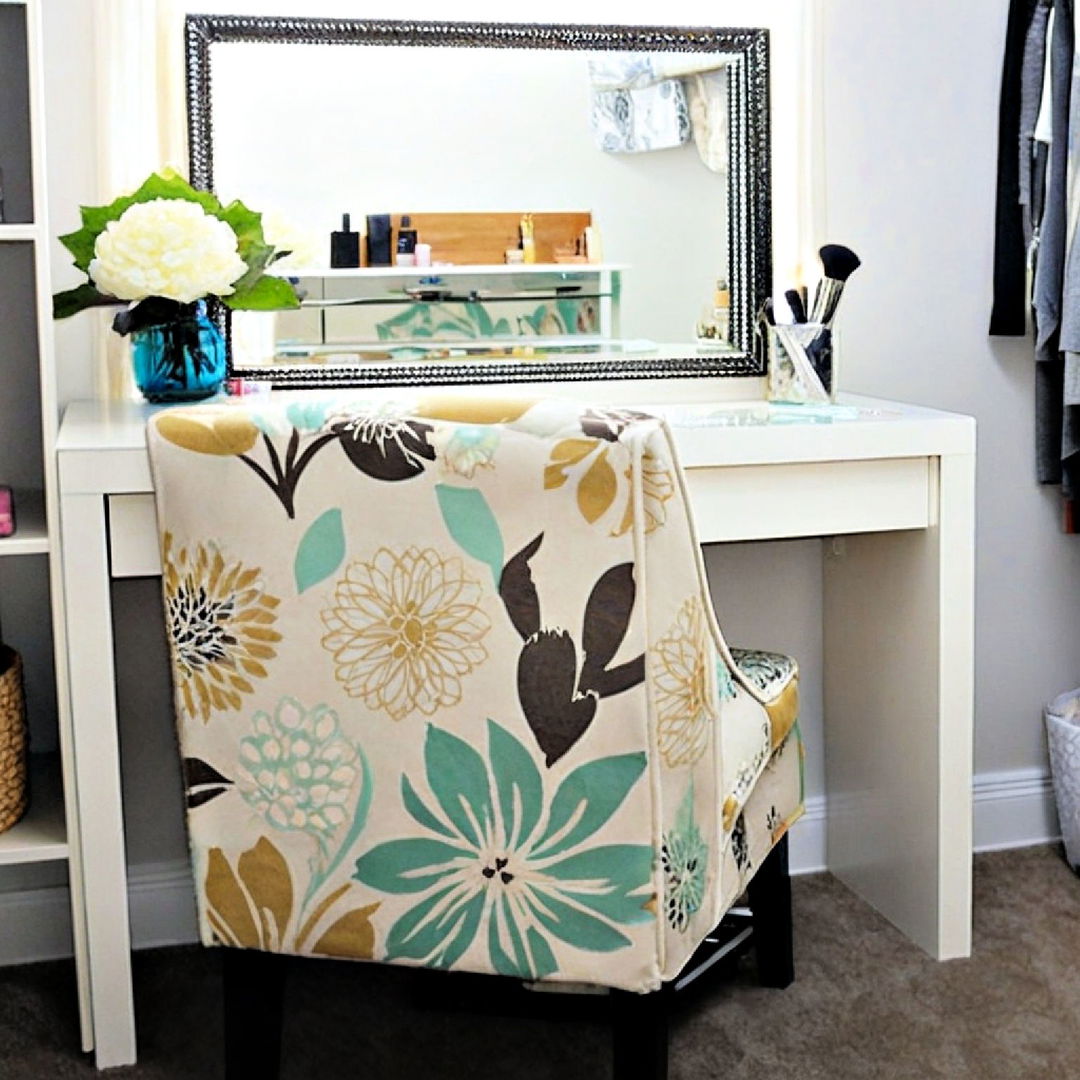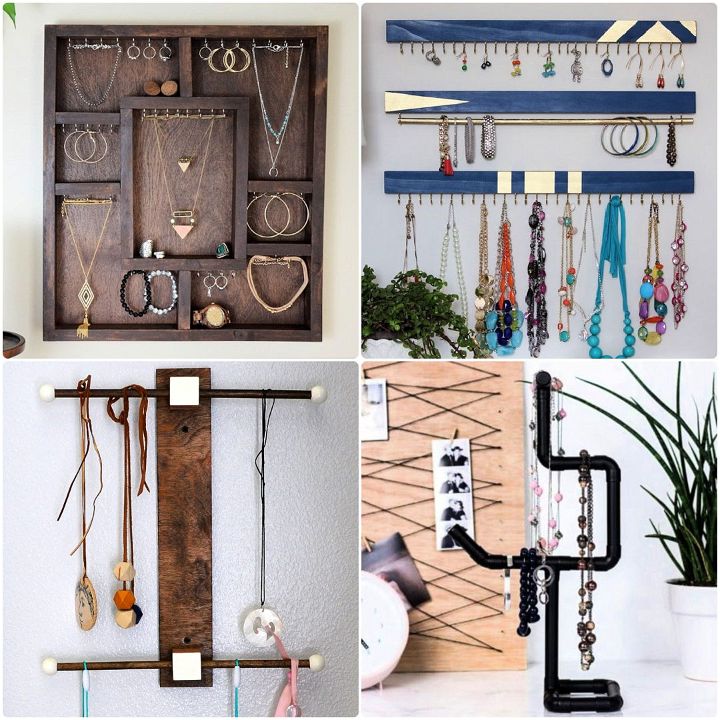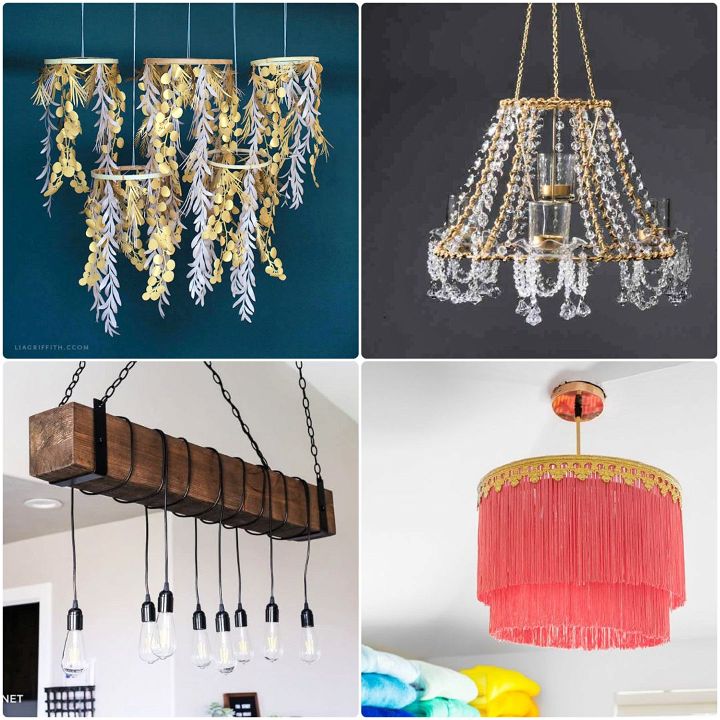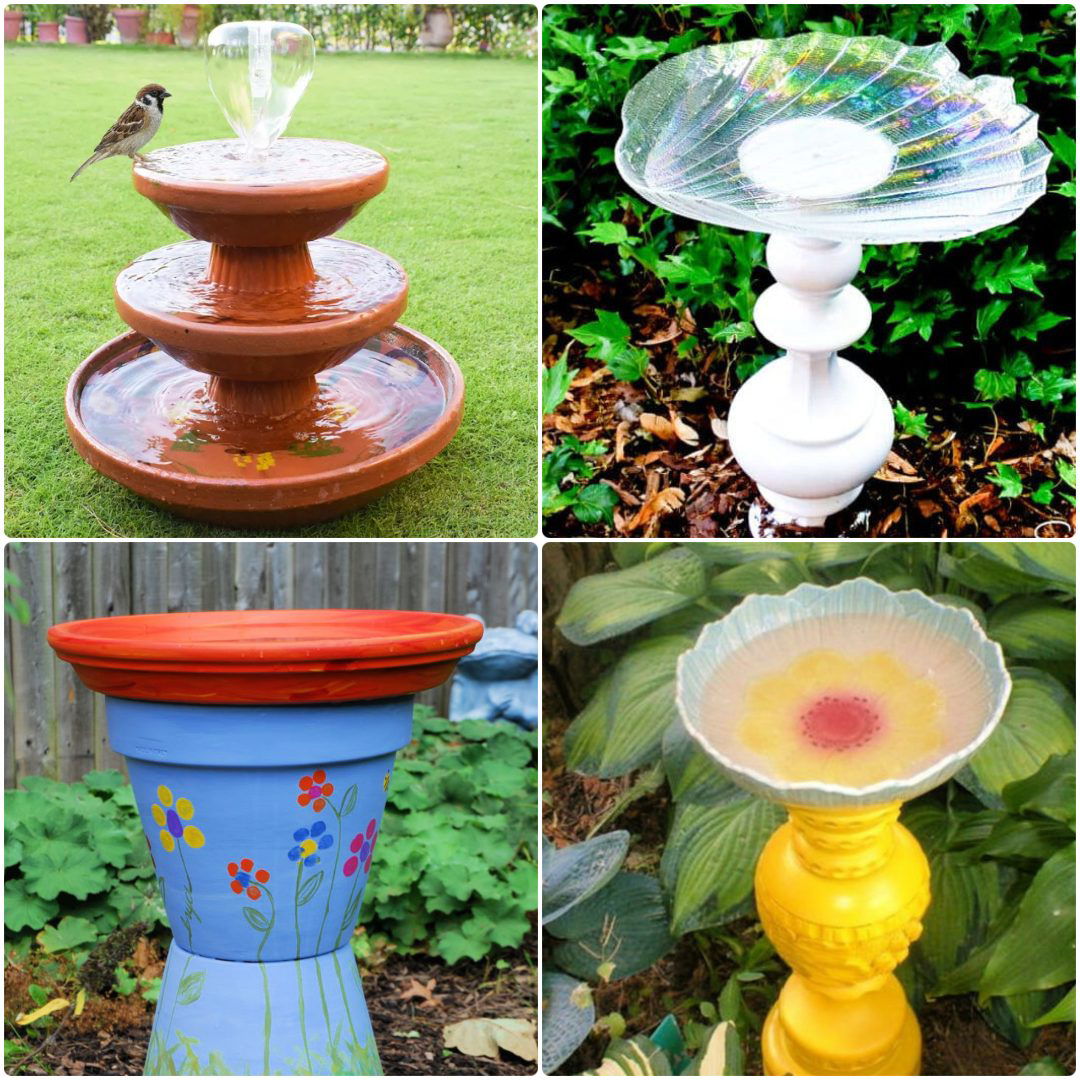Looking for a DIY quail coop? You can make a cozy and nice home for your quails with these 20 easy DIY quail cage plans and ideas. These free quail cage plans are easy to follow and have clear instructions and pictures to help you. Whether you want to build a simple backyard quail coop or a fancy two-story quail hutch, you will find a plan that suits your skills and tastes. You can choose from a modern DIY quail coop, a stacked coturnix quail cage with an egg tray, or a single-tier quail cage from Dale’s Quails. You can also learn how to make a quail cage that saves space and is very efficient.
Each DIY quail cage plan has a list of materials and supplies you will need, as well as detailed and step-by-step instructions. Some plans even have a PDF file that you can download and print for easy reference. These plans are made for different levels of skill and style, so you can create a unique quail cage that you and your quails will love.
These DIY quail cage plans are great for anyone who wants to build their own quail cages. They are cheaper than buying ready-made cages, and they also let you add your own touch to your quail keeping hobby. Start making your quail cage today!

How to Choose the Right Quail Cage for Your Needs
Quails are small birds that can be raised for eggs, meat, or both. They are easy to care for and do not require much space. However, they do need a proper cage that can protect them from predators, weather, and diseases. Choosing the right quail cage for your needs depends on several factors, such as:
- The number and breed of quails you want to keep
- The purpose of raising quails (eggs, meat, or both)
- The space and budget you have available
- The climate and environment you live in
- The design and features you prefer
Some of the most common types of quail cages are:
- Stacked quail cages: These are vertical cages that can house multiple quails in separate compartments. They are ideal for saving space and maximizing production. They usually have wire mesh floors that allow the droppings to fall into trays below, making cleaning easier. However, they can also be more expensive and harder to access than other cages.
- Single quail cages: These are horizontal cages that can house one or a few quails in each unit. They are ideal for keeping different breeds or sexes of quails apart or for isolating sick or injured birds. Solid floors in quail cages typically require lining with bedding material, like wood shavings or straw, to absorb moisture and odor.However, they can also be more affordable and easier to build than other cages.
- Quail pens: These are large enclosures that can house many quails in a natural setting. They are ideal for providing the quails with more room to roam and forage, as well as fresh air and sunlight. The wire mesh walls and roofs typically prevent the quails from escaping or being attacked by predators. However, they can also be more difficult and costly to maintain than other cages.
Before you decide on a quail cage, you should do some research on the different options available and compare their pros and cons. You should also consider your own goals and preferences, as well as the needs and behavior of your quails. A good quail cage should be:
- Spacious enough to accommodate your quails comfortably
- Sturdy enough to withstand wear and tear
- Secure enough to prevent escapes and intrusions.
- Ventilated enough to provide fresh air and prevent overheating
- Clean enough to prevent diseases and parasites
- Accessible enough to allow feeding, watering, collecting eggs, and inspecting the birds
What Materials and Tools You Will Need to Build a Quail Cage
Building a quail cage is a fun project that can save you money and give you more control over the design and features of your cage. However, it also requires some planning and preparation, as well as some materials and tools that you will need to gather before you start.
Materials
The materials you will need to build a quail cage depend on the type and size of the cage you want to make, but some of the most common ones are:
- Wood: Wood is a versatile and durable material for the frame, floor, doors, or roof of your quail cage. Use outdoor appropriate wood like pine, cedar, or plywood. Measure and cut to your desired dimensions.
- Wire mesh: Wire mesh is a flexible and lightweight material for quail cage walls or floors. Any strong wire mesh, like chicken wire, hardware cloth, or welded wire, can be used to keep out predators while safely containing your quails. Simply measure and cut the wire mesh to your desired shape.
- Hinges: Hinges are metal devices used to attach quail cage doors or roof to the frame. Choose hinges compatible with wood and wire mesh materials, like butt hinges, strap hinges, or piano hinges. Drill holes in desired locations to attach the hinges.
- Latches: Metal devices to secure quail cage doors or roof when closed. Any easy-to-operate, lockable latches work, like hook-and-eye, slide bolts, or padlocks. Drill holes in wood and wire mesh to attach.
- Trays: Plastic or metal containers for collecting quail droppings on wire mesh floors. Use baking trays, litter trays, or drip pans that fit under the cage and slide in and out easily. Measure and cut wire mesh for tray openings.
Tools
The tools you will need to build a quail cage depend on the materials and methods you use, but some of the most common ones are:
- Tape measure: Use it to measure the dimensions of your cage and components. Use it to mark and cut wood and wire mesh to your desired size.
- Wire cutter: Use cut wood according to your measurements. Choose the right type of saw for your material: hand saw, circular saw, or jigsaw. Remember to use caution and wear protective gloves and goggles.
- Wire cutter: Use this tool to cut wire mesh based on your measurements. Any sharp wire cutter like pliers, scissors, or tin snips can do the job. Be cautious and wear gloves and goggles for protection.
- Drill: This tool is used to make holes in wood and wire mesh for attaching hinges and latches. Use any powerful drill, such as cordless, electric, or hand drill, to pierce through materials. Handle with care and wear protective gloves and goggles.
- Screws: Metal fasteners used to secure hinges and latches to wood and wire mesh. Any long enough screws work, like wood screws, metal screws, or self-tapping screws. Use a screwdriver or drill bit.
Before you start building your quail cage, you should make sure you have all the materials and tools you need, as well as a clear plan and instructions for your project. You should also work in a safe and spacious area where you can avoid accidents and injuries.
Common Mistakes and Problems to Avoid When Building a Quail Cage
Building a quail cage can be a rewarding and satisfying project, but it can also come with some challenges and pitfalls. If you want to avoid wasting time, money, and effort, you should be aware of some common mistakes and problems that can occur when building a quail cage, such as:
- Choosing the wrong materials: Not all materials are suitable for quail cages, as some can be toxic, flimsy, or unsuitable for outdoor use. For example, you should avoid using treated wood, as it can contain harmful chemicals that can leach into the quail’s environment. You should also avoid using galvanized wire, as it can rust and corrode over time. Instead, you should opt for natural or untreated wood, such as pine, cedar, or plywood, and stainless steel or vinyl-coated wire mesh.
- Making the cage too small: Quails are small birds, but they still need enough space to move around comfortably and express their natural behaviors. A cage that is too small can cause stress, aggression, feather pecking, and reduced egg production. As a general rule, you should provide at least 1 square foot of floor space per quail in your cage. You should also make sure the cage is high enough to allow the quails to stand upright without hitting their heads on the roof.
- Forgetting to add ventilation: Quails need fresh air and good air circulation in their cage to prevent overheating, respiratory problems, and ammonia buildup from their droppings. A cage that is poorly ventilated can create a humid and unhealthy environment for your quails. You should make sure your cage has enough openings or gaps in the walls or roof to allow airflow. You should also avoid placing your cage in direct sunlight or in areas with strong winds.
- Neglecting to secure the cage: Quails are vulnerable to predators, such as dogs, cats, rats, snakes, raccoons, and foxes. A cage that is not secure enough can allow these animals to enter and harm your quails. You should make sure your cage has sturdy walls and roof that can withstand attacks from predators. You should also make sure your cage has locks or latches on the doors that cannot be opened by curious paws or claws. You should also place your cage on a solid base or bury the edges of the wire mesh in the ground to prevent digging predators from getting under the cage.
- Failing to maintain the cage: Quails are relatively low-maintenance birds, but they still need a clean and comfortable cage to thrive. A cage that is not maintained regularly can become dirty, smelly, and unhealthy for your quails. You should clean your cage at least once a week by removing and replacing the bedding material, wiping down the walls and floor with water and vinegar, and washing the feeders and waterers with soap and water. You should also check your cage for any signs of damage or wear and tear and repair or replace any broken parts as soon as possible.
By avoiding these common mistakes and problems, you can ensure that your quail cage is well-built, safe, and suitable for your quails.
Tips and Tricks to Maintain and Clean Your Quail Cage
Maintaining and cleaning your quail cage is an essential part of keeping your quails healthy and happy. However, it can also be a boring and time-consuming task if you don’t have some tips and tricks to make it easier and more efficient. Here are some tips and tricks to maintain and clean your quail cage:
- Use removable trays or liners: One of the main sources of dirt and odor in your quail cage is the droppings from your quails. To make it easier to remove them, you can use removable trays or liners under the wire mesh floor of your cage. You can use plastic or metal trays that are easy to slide in and out of the cage, or you can use disposable liners such as newspaper or cardboard that you can simply throw away after use. This way, you don’t have to scrape or scrub the floor of your cage every time you clean it.
- Use a hose or a spray bottle: Another source of dirt in your quail cage is the dust and debris that accumulates on the walls and roof of your cage. To make it easier to wash them off, you can use a hose or a spray bottle with water and vinegar mixture. You can spray or hose down the walls and roof of your cage until they are wet enough to wipe off with a clean towel or cloth. This way, you don’t have to use too much water or vinegar that can damage your wood or wire mesh materials.
- Use a vacuum or a brush: Another source of dirt in your quail cage is the feathers and seeds that fall on the floor or get stuck in the corners of your cage. To make it easier to remove them, you can use a vacuum or a brush with soft bristles. You can vacuum or brush the floor and corners of your cage until they are free of feathers and seeds. This way, you don’t have to use your hands or a shovel that can damage your wood or wire mesh materials.
- Use natural or homemade cleaners: Another tip to maintain and clean your quail cage is to use natural or homemade cleaners that are safe and effective for your quails. You can avoid using harsh chemicals or detergents that can harm your quails or leave residues in your cage. Instead, you can use natural or homemade cleaners such as vinegar, baking soda, lemon juice, or tea tree oil. You can mix these ingredients with water and use them to wipe down your cage or soak your feeders and waterers. These cleaners can help to sanitize, deodorize, and disinfect your cage without harming your quails.
By using these easy tips and tricks, you can maintain and clean your quail cage with ease and efficiency.
The Benefits of Having a Quail Cage for Your Backyard Farming
Quail cages are specialized enclosures that are designed to house quails for backyard farming. Quails are small game birds that can be raised for eggs, meat, or both. They are easy to care for and do not require much space. Quail cages offer several benefits for backyard farmers, such as:
- Space efficiency: Quail cages can be stacked vertically or arranged horizontally to maximize the use of limited land or floor space. Quail cages can fit in small areas, such as backyards, balconies, or garages. Quail cages can also accommodate more birds per unit area than other types of poultry housing, such as coops or pens. Quail cages can provide at least 1 square foot of floor space per quail, which is the recommended minimum for their comfort and well-being.
- Egg collection: Quail cages can make egg collection easier and more convenient for backyard farmers. Quail cages usually have slanted floors or trays that allow the eggs to roll out of the cage and into a collection bin or basket. This prevents the eggs from being stepped on, cracked, or soiled by the quails. It also reduces the risk of egg eating or pecking by the quails. Quail cages can also protect the eggs from predators, such as rats, snakes, or raccoons.
- Health monitoring: Quail cages can make health monitoring easier and more accurate for backyard farmers. Quail cages usually have individual compartments that house each quail separately. This allows for easy observation and identification of each bird’s health, behavior, and productivity. It also prevents the spread of diseases or parasites among the quails. Quail cages can also provide better ventilation and sanitation for the quails, as they allow the droppings to fall through the wire mesh floor or into a removable tray below. This reduces the ammonia buildup and odor in the cage and improves the air quality for the quails.
- Feed efficiency: Quail cages can make feed efficiency higher and more economical for backyard farmers. Quail cages usually have feeders and waterers that are attached to the outside of the cage or hung on the wire mesh wall. This prevents the feed and water from being spilled, wasted, or contaminated by the quails. It also reduces the competition and aggression among the quails over food and water resources. Quail cages can also allow for precise measurement and control of feed intake and output for each quail, which can help optimize their growth and performance.
By having a quail cage for your backyard farming, you can enjoy these benefits and more. Quail cages can help you raise healthy, happy, and productive quails in a small space with minimal effort and cost.
How to Choose or Build a Quail Cage for Your Backyard Farming
Quail cages are specialized enclosures that are designed to house quails for backyard farming. Quails are small game birds that can be raised for eggs, meat, or both. They are easy to care for and do not require much space. However, they do need a suitable cage that meets their needs and preferences. Here are some tips on how to choose or build a quail cage for your backyard farming:
Consider the Size and Number of Your Quails.
Quails need at least 1 square foot of floor space per bird to be comfortable and healthy. They also need enough headroom to stand upright without hitting their heads on the roof. The height of the cage should be either lower than 18 inches or higher than 6 feet to prevent the quails from flying up and injuring themselves. The size and number of your quails will determine how big your cage should be and how many cages you will need.
Consider the Location and Climate of Your Quails.
Quails can be kept indoors or outdoors, depending on your preference and availability of space. However, you should consider the location and climate of your quails when choosing or building a quail cage. Quails need a quiet and safe location that is away from loud noises, bright lights, extreme temperatures, or potential predators. They also need good ventilation and air circulation in their cage to prevent overheating, respiratory problems, and ammonia buildup from their droppings. You should also avoid placing your cage in direct sunlight or in areas with strong winds.
Materials and Design of Your Quail Cage
Consider the materials and design of your quail cage. Quail cages can be made from various materials and designs, depending on your budget, skills, and creativity. However, you should consider the materials and design of your quail cage carefully, as they can affect the durability, functionality, and aesthetics of your cage. Some common materials and designs for quail cages are:
- Wire cages: Wire cages are usually made from welded wire or galvanized wire mesh that is attached to a metal or wooden frame. Wire cages are easy to clean, provide good ventilation, and allow you to see your quails easily. However, wire cages can also rust, corrode, or break over time, especially if exposed to moisture or harsh weather conditions. Wire cages can also injure your quails’ feet or feathers if they are not smooth or coated with vinyl or plastic.
- Wood cages: Wood cages are usually made from natural or untreated wood, such as pine, cedar, or plywood, that are cut and assembled into a box-like structure. Wood cages are sturdy, durable, and attractive and can provide insulation and shelter for your quails. However, wood cages can also rot, warp, or crack over time, especially if exposed to moisture or termites. Wood cages can also harbor bacteria or parasites if they are not cleaned or disinfected regularly.
- Plastic cages: Plastic cages are usually made from plastic containers or boxes that are modified with holes or windows for ventilation and access. Plastic cages are lightweight, cheap, and easy to make and can provide protection from predators and weather elements for your quails. However, plastic cages can also melt, crack, or break over time, especially if exposed to heat or UV rays. Plastic cages can also accumulate moisture or odor if they are not ventilated properly.
Features and Accessories of Your Quail Cage
Consider the features and accessories of your quail cage. Quail cages should have some features and accessories that make them more comfortable and convenient for your quails and yourself. Some common features and accessories for quail cages are:
- Feeders and waterers: Feeders and waterers are essential for providing food and water for your quails. They should be easy to access and refill for you and your quails and should prevent spillage, waste, or contamination of the feed and water. Feeders and waterers can be attached to the outside of the cage or hung on the wire mesh wall of the cage. They can also be stand-alone or come in different forms, such as troughs, tubes, cups, bottles, or nipples.
- Egg trays: Egg trays are optional but helpful for collecting eggs from your quails. They are usually slanted floors or trays that allow the eggs to roll out of the cage into a collection bin or basket below the cage. This prevents the eggs from being stepped on, cracked, or soiled by the quails. It also reduces the risk of egg eating or pecking by the quails. Quail cages can also protect the eggs from predators, such as rats, snakes, or raccoons.
- Dust baths: Dust baths are important for quails to clean their feathers and skin from dirt, parasites, or excess oil. They should be provided in a small box or container that is filled with sand, ash, or diatomaceous earth. Dust baths should be placed in a sheltered area of the cage that is away from the feeders and waterers. Dust baths should be cleaned or replaced regularly to prevent mold or bacteria growth.
- Toys and enrichment items: Toys and enrichment items are useful for quails to stimulate their natural behaviors and prevent boredom or stress. They can include branches, tunnels, mirrors, bells, balls, or other objects that quails can peck, scratch, perch, or play with. Toys and enrichment items should be safe and durable for quails to use and should be changed or rotated periodically to maintain their interest.
DIY Quail Cage Plans and Ideas
Quail cage ideas can vary depending on your preference, budget, skills, and creativity. You can build your own cages from scratch using various materials and designs. Here are 25 easy and free DIY quail cage plans and ideas that you can use as inspiration:
1. How to Build a Quail Cage
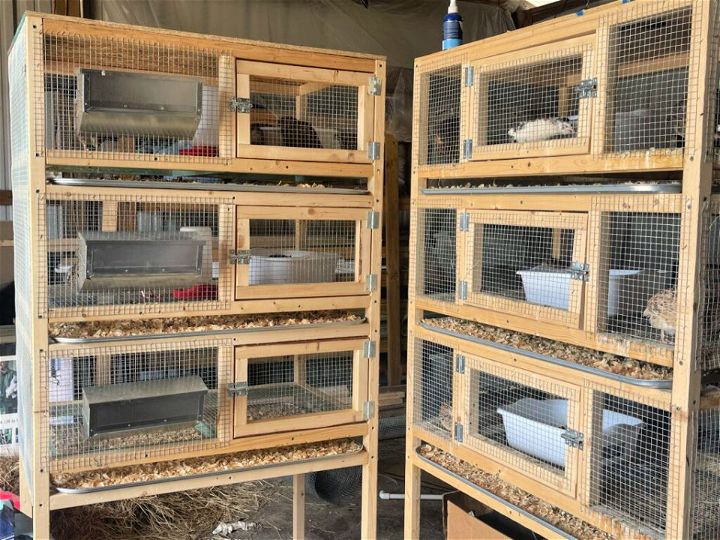
Looking for an easy-to-build quail cage? Look no further! This stepwise tutorial will show you how to quickly and easily assemble a secure, spacious enclosure for your quail.
All necessary materials, including 2″ x 2″ pine boards, 1″ x 2″ pine boards, plywood, screws, hardware cloth, oil trays, and latches, are listed in the provided Materials List. You’ll also need basic tools, such as a hand drill, a ⅛″ bit (for pre-holes), a table saw, and a clamp.
With clear instructions and a demonstration video included, this project is suitable even for novice DIYers looking to build their very own functional quail cage. Get started now on makingthe perfect home for your feathered friends! simplymadehome
2. DIY Backyard Quail Coop
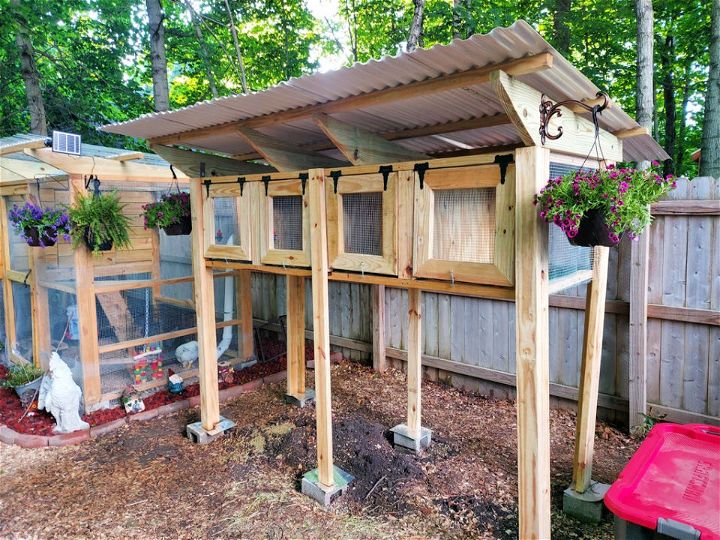
Set up a comfortable home for your quail with this DIY backyard quail coop! This quick and easy-to-build structure includes all the necessary tools and lumber needed to get started. The drill, drill bits, miter saw, table saw, hammer, work gloves (optional), ladder, wire cutters, carpenter’s level, and circular saw are all required tools you’ll need. For lumber, use two 2″x8″x6′ rafters, three 1″x2″x12′ roof support beams, as well as four 2″x4”x8′, fifteen 2” x 4” x 6′. Start building today and have happy quails roaming around in no time! instructables
3. Building a Two Level Quail Hutch
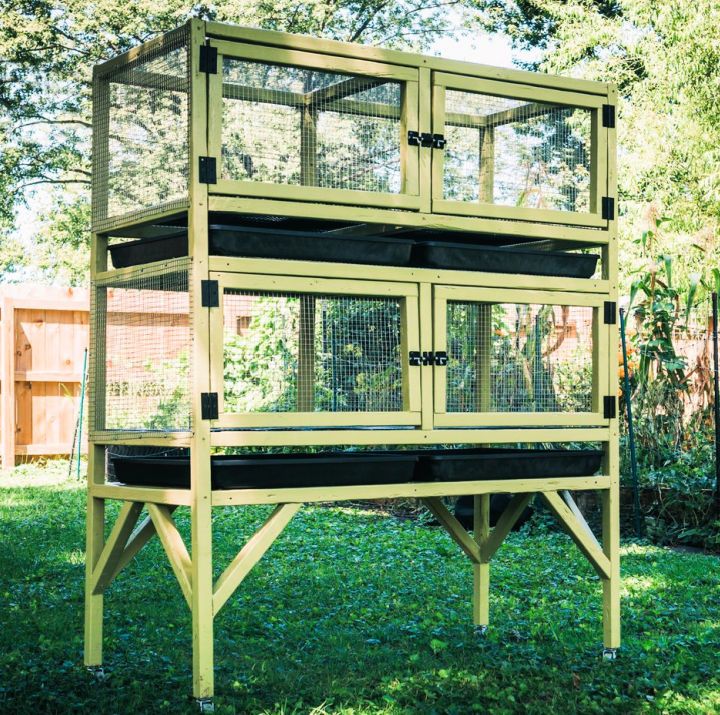
You don’t need to spend a fortune on quail cages. You can make your own with DIY quail cage plans. They are practical, safe, and comfortable. Make a two-level quail hutch with this easy DIY guide! You’ll need 18 2×2 furring strips, screws, four rubber swivel casters, hardware cloth for the roof and sides, thick-gauge wire for the floor, plastic trays, hinges, and bolt latches. With basic tools like a drill, circular saw, and carpenter’s square, you’ll have your quail home built in no time.
Measure twice before cutting to make sure it’s perfectly sized for your feathered friends. Along with the necessary materials and tools, you’ll only need patience – give yourself plenty of time, as building a hutch is no quick job. But when finished, you can look forward to having happy birds living in their new habitat. tealstonehomestead
4. How to Make a Quail Hutch
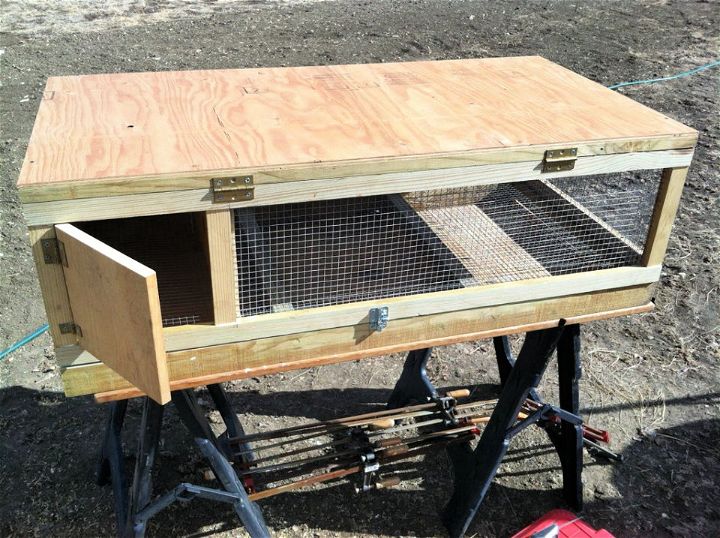
Have you ever wanted to keep quail as pets? Making your own quail hutch is the perfect way to get started. With just few simple tools and supplies, you can build a safe, comfortable enclosure for your new feathered friends.
First, cut up the parts needed into manageable pieces. Next, use glue to assemble the panels that will form the structure of the hutch. Add wire mesh for ventilation and plywood for extra protection from predators. Finally, screw everything together securely, and there you have it – your very own custom-built quail hutch! instructables
5. Free Stacked Quail Cage Plan
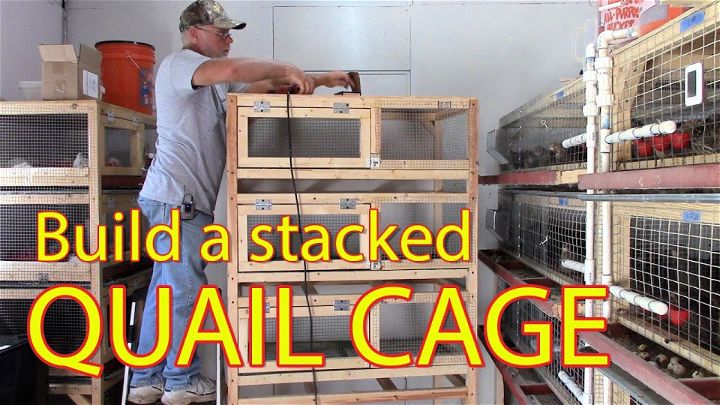
This free stacked quail cage plan is perfect for quail keepers who want to house many birds in a small space. Each cage measures 6 square feet and can comfortably accommodate up to 18 quail, making it an ideal solution for raising multiple birds. The plan features detailed instructions on how to build the cage, including measurements and a step-by-step video tutorial that guides viewers through building the cages from start to finish. With this plan, you can easily construct your own stacked quail cages with quality craftsmanship at an affordable cost.
6. Modern DIY Quail Coop
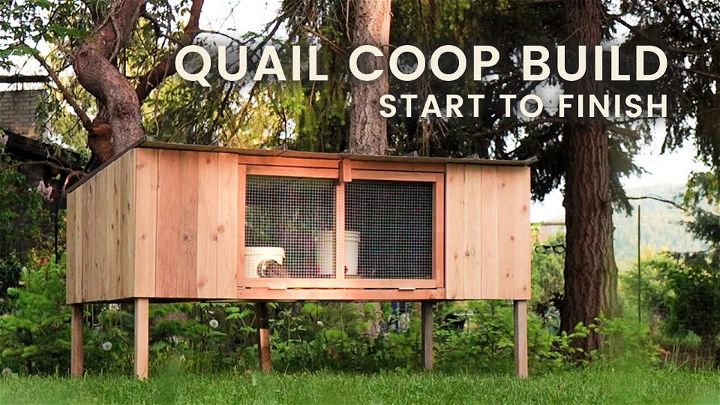
Are you looking for a modern DIY quail coop? DIY quail cage plans are the best solution for housing your quails. They are simple, sturdy, and spacious. Follow this step-by-step guide to build your own! Using reclaimed materials, design and construct a spacious area for up to 12 birds. We cover the main walls, flooring, side walls, front walls, and roof – everything you need to make an efficient and comfortable home for your feathered friends. Get ready to collect those freshly laid eggs each day!
7. Easy Quail Cage With Egg Roll Out Tray
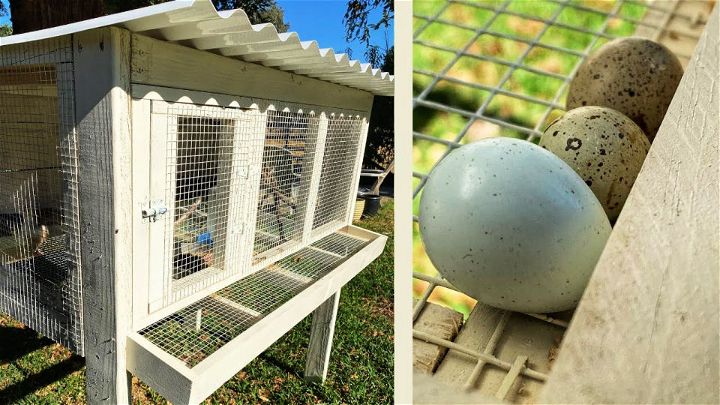
Are you looking for an affordable way to house your quail? Check out this easy quail cage with an egg roll-out tray! It’s simple to assemble, using just an electric saw, screwdriver/drill, decking screws, ½ inch hardware cloth, 2 hinges, and a latch. All it takes is 8ft long, each of 2 x 4, 2 x 3, 2 x2, and 1×2 boards – plus some creativity. Our sturdy cage fits up to 16 coturnix quails with room for them to move about-plus a bonus roll-out tray that makes collecting eggs quick and mess-free. Get your quail the home they deserve!
8. Stacked Coturnix Quail Cage Ideas
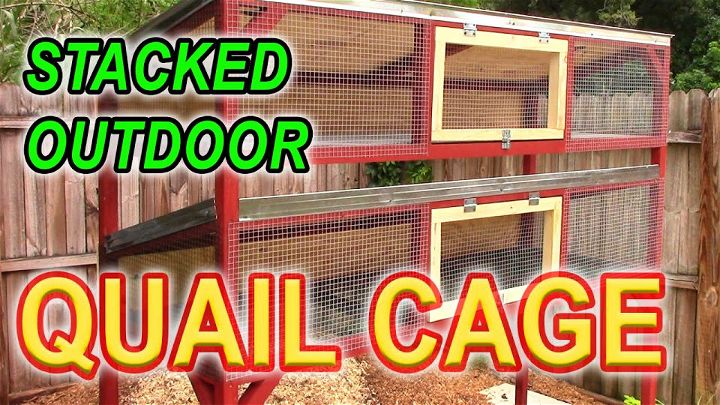
Looking for Coturnix quail cage ideas? Look no further! With this step-by-step guide, you can easily build your own stacked cage. This guide covers all the important aspects, such as measurements, drilling holes, floor framing, hanging wire, and more. Not to mention easy access with a door frame and doors that open outwardly, plus a manure slide-out board for quick cleanup. Get started building your perfect stackable Coturnix quail cage today!
9. DIY Small Quail Cage – Step by Step Instructions
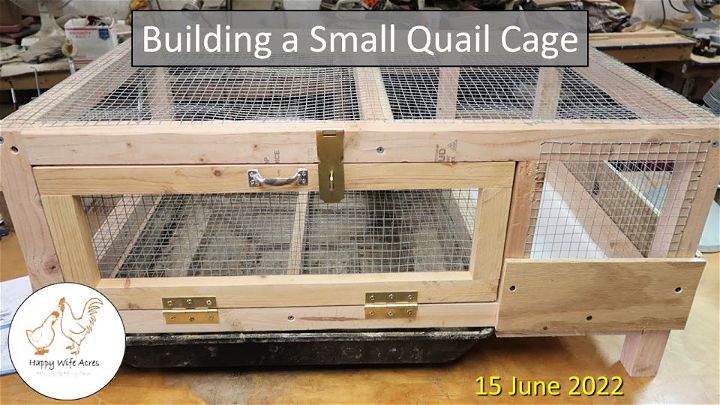
If you want to enjoy fresh eggs and meat from your own quails, you’ll need DIY quail cage plans. They are easy, cheap, and effective. Build your own small quail cage with this step-by-step guide! Perfect for a garage or even indoors, anyone can enjoy fresh eggs every day without having to worry about local restrictions or expensive costs.
With all new materials and easy instructions, you can make your own quail cage for only $65. This comprehensive guide provides the material cut list plus helpful tips on how to build it quickly and easily. Get ready for delicious quail eggs from your very own DIY small quail cage today!
10. Make Your Own Quail Cage
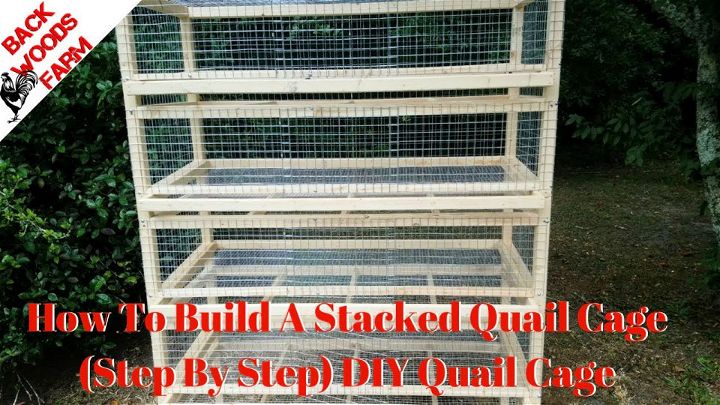
Get started with building your own quail cage with these easy-to-follow instructions. All you need is some basic tools and supplies, like a drill, 1by2 pieces of wood, wire mesh, and footers. First, attach the footers to the frame, then put two pieces 1by2 together to make one side. Next, cut the wire mesh for both sides and make sure it fits inside before cutting outdoors for each side. That’s all there is to it – now you can enjoy raising your own quail in their new home!
11. Cheap DIY Quail Cage Using Wood and Iron Net

Are you looking for an inexpensive way to build a quail cage? Look no further than this DIY quail cage using wood and iron net. All you need are standard materials such as wood, iron net (½ x ½ and 1.5 x 1.5), plastic net (36 x 24 inches), nail, PVC pipe (3 inches), wood staple gun, wood cutting machine and grinding machine for cutting the iron net. With these items, you can easily make the perfect home for your feathered friends with minimal effort at just a fraction of the cost of store-bought cages. Put your carpentry skills to work, and start building today!
12. Making a Quail Hutch
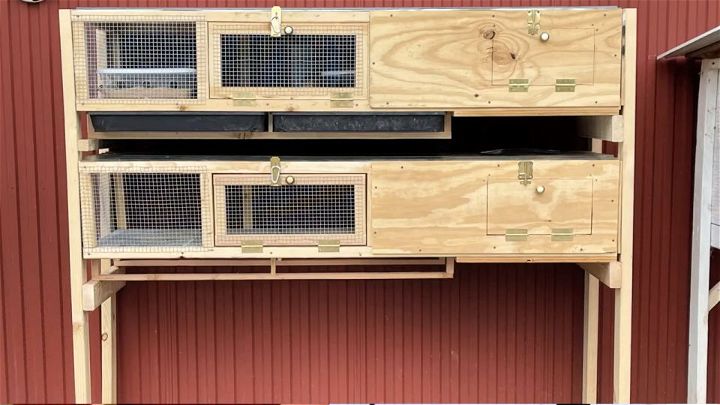
Quails are small, hardy, and delicious birds that you can keep in your backyard. Find out how to make DIY quail cage plans here. Achieve the ideal shelter for your quail today with this DIY quail hutch! The cage is 2 ft deep, 6 ft long, and 13 inches tall, with a third dedicated to sand so your birds can dust, bathe and lay their eggs comfortably.
Constructed with ½″x½″ hardware cloth on the floor and sides and 1.5″x1.5″ ripped from 2×6’s railings, the overall height of this hutch is 6ft tall, topped off with corrugated galvanized steel (2’x12′ cut in half). Build it today to give your quail a secure place they can call home!
13. Build Your Own Quail Cage
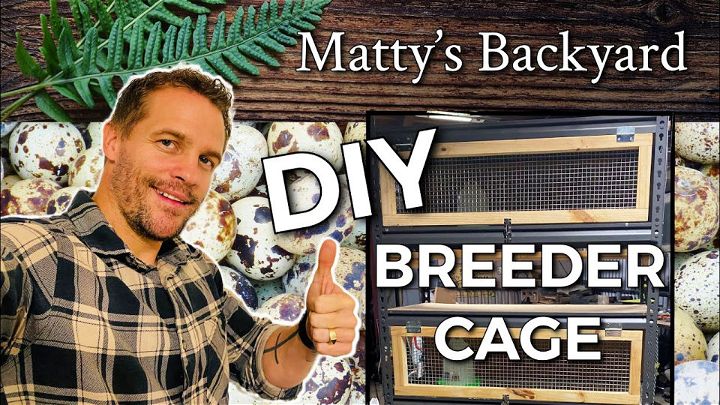
Build your own quail cage with this selection of quality doors, hardware mesh, and assembly. This easy to assemble products guarantee a secure home for your quails so you can have peace of mind knowing they are healthy and safe. With the right tools and supplies from this link, you will be able to build the perfect coop for housing your feathered friends. From small cages suitable for a single bird to larger cages that can house many birds at once, you can have everything you need. Learn how to make a feeding system, water system, and breeding cage.
14. Ridiculously Efficient Quail Cage Design
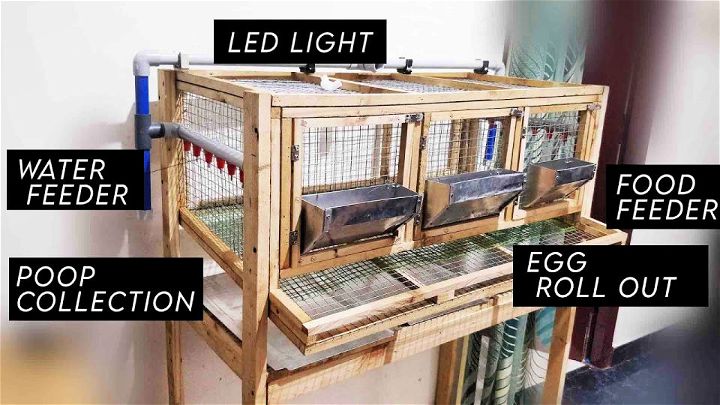
Looking for a ridiculously efficient quail cage design? This custom-built cage features an efficient design made from high-quality materials such as wood, wire mesh, plumbing, and nipple feeders.
It also includes pallet wood to make the perfect environment for your quails. The sturdy construction ensures safety and protection from predators while providing comfortable living conditions. Plus, this unique enclosure offers plenty of room so you can easily add perches and other accessories for your avian friends. Get the most out of your quail-keeping experience with this ridiculously efficient quail cage design!
15. Simple DIY Mobile Quail Cage
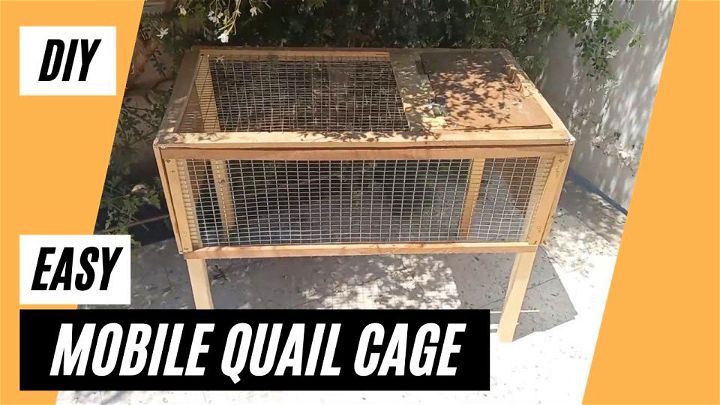
Constructing a mobile quail cage from scratch can be quickly accomplished with just a few supplies and some straightforward instructions. Begin by cutting the wood pieces for the frame, then attach the wires carefully to complete the look. No expertise is required! With patience and attention to detail, you’ll have a beautiful cage ready in no time – perfect for keeping your quail safe and secure while they roam around outdoors. Get creative with this project, and make sure to share your final product on social media!
16. Raising Quail Hutch Setup
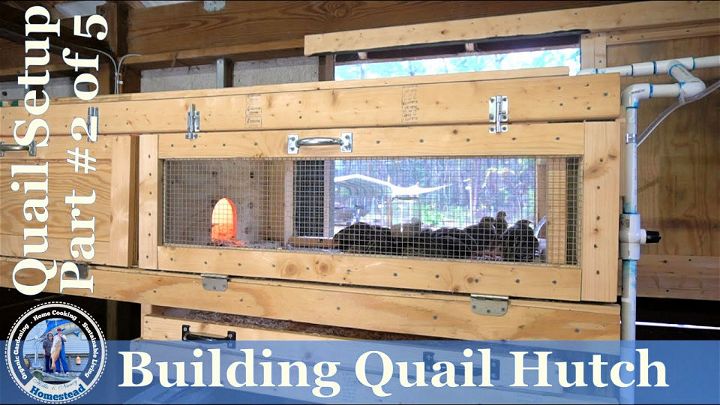
DIY quail cage plans are a smart and economical way to raise your own quails. Learn how to build them with these instructions. Get ready to start your quail hutch setup project with this easy-to-follow guide! With the help of the 4×4 material, measurements of 7 feet long and 67 inches in height, you can make a functional and safe raising space for your quails. All you need to do is follow these steps and gather all necessary materials from the list provided. Start building now and enjoy all the benefits of having an optimal raising environment for your quails! Invest in this raising quail hutch setup today for ultimate satisfaction.
17. Homemade Quail Cage
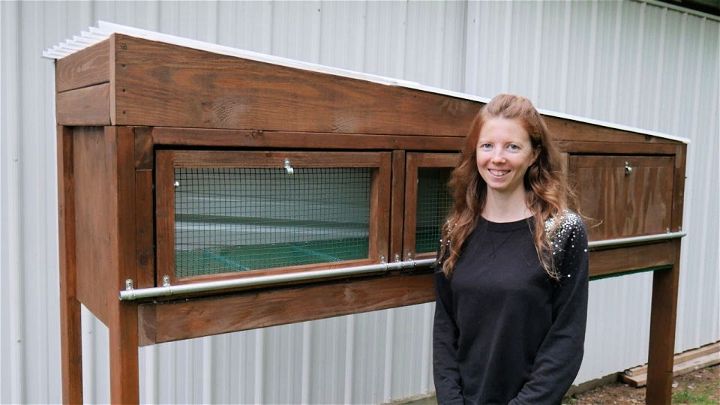
Are you looking for a way to house your pet quail? Look no further than building this homemade quail cage! This quail cage plan is perfect for keeping your feathered friend safe and happy. From the doors, roof, and conduit to attaching doors and staining all the parts, the guide provides detailed instructions on how to produce a top-quality quail cage. With the help of this guide, you’ll have an attractive housing solution for quails in no time at all! Get started today and build your very own homemade quail cage!
18. Build an Epic Quail Pen
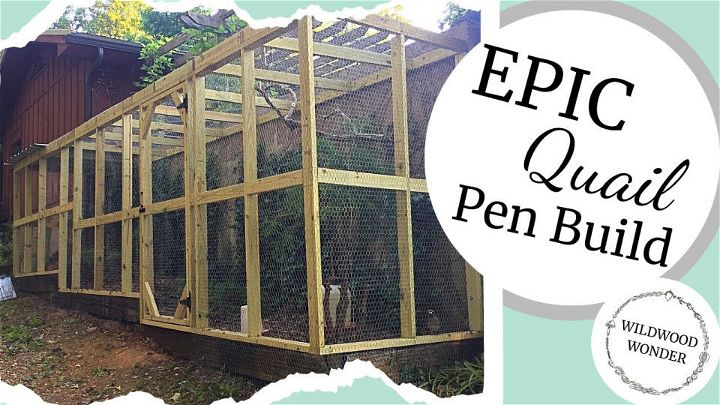
Build an epic quail pen with this easy-to-follow quail cage plan. Utilize expansion bolts to make the necessary cuttings and start the process of assembly. Follow along step-by-step for a successful outcome that will have your quails feeling right at home in their new pen! A fantastic solution for offering your quails a safe, secure environment without investing significant resources in building materials. With detailed instructions and helpful tips, crafting an epic quail pen has never been easier!
19. Single Tier Quail Cage From Dales Quails
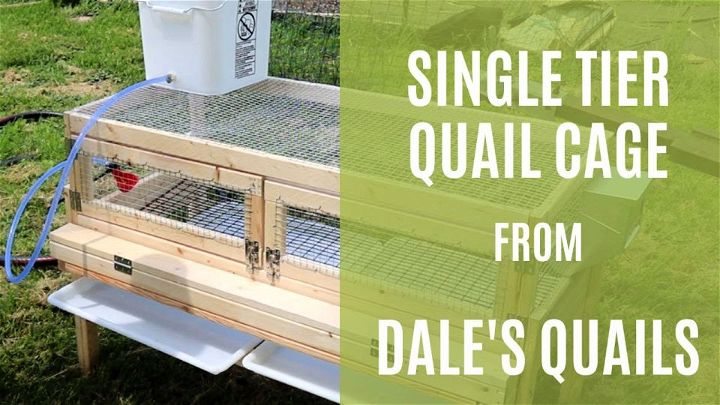
Looking for an ideal single-tier quail cage? Look no further than Dales’s quails! These cages are easy to assemble, with simple instructions and all the required dowel pieces included. Constructed from durable materials, these quail cages can stand up to years of use. An added benefit is that this design has plenty of room for your birds to move around and thrive in their environment. Plus, you can rest assured knowing that this plan supports responsible animal husbandry practices. Get started with yours now, and give your feathered friends a cozy home today!
20. DIY Quail Cage Using Scrap Wood
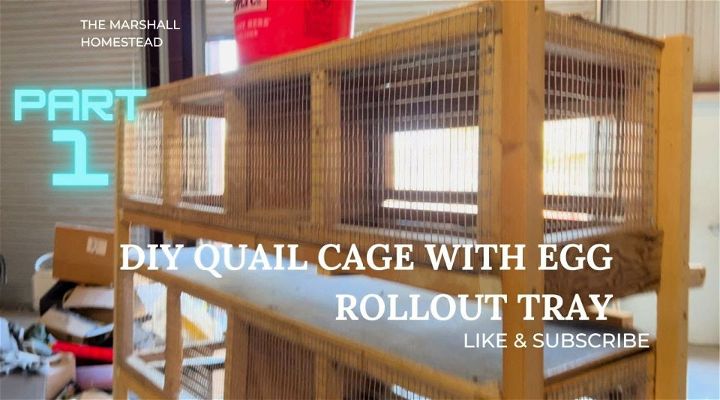
Love quails but don’t have much money to buy a cage? Look no further! Get creative and make your own using just some scrap wood. Check out this video guide that shows you the exact measurements, assembling instructions, and finishing touches needed to craft your own DIY quail cage – perfect for housing pet quails or even raising them for eggs. Get ready to build an inexpensive yet beautiful home for your feathered friends today!
Conclusion:
Quail are amazing birds that can provide you with nutritious eggs, delicious meat, and a lot of fun. If you want to raise quail in your backyard, you will need a good habitat that meets their needs and keeps them healthy and happy. Our list of easy DIY quail coop plans and ideas above can help you build the perfect quail coop for your flock.
Whether you prefer a simple hutch, a multi-layered cage, a spacious aviary, or a movable tractor, you can find a design that suits your budget, space, and style. You can also customize your quail habitat with plants, feeders, waterers, sand baths, and other accessories to make it more comfortable and attractive for your quail. By following these free DIY quail coop plans and ideas, you can create a quail paradise in your backyard and enjoy the benefits of raising these wonderful birds.

